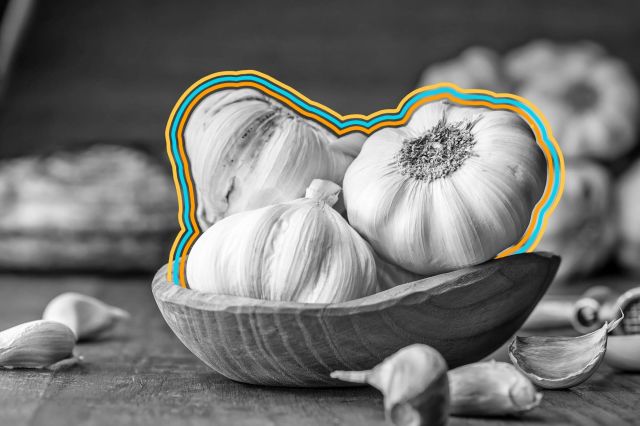
Grasse, France
Grasse, in southern France’s Provence region, is the perfume capital of the world, and its streets are as sweet-smelling as the fragrances exported from here. The smell comes from nearby fields filled with jasmine, lavender, and May rose — all used in the perfumes local manufacturers send worldwide. This current aroma is a welcome change from what the town was best known for during the Middle Ages: leather crafting (and the pungent tanned animal hides and lye used in the process). That began to change in the 1700s, when glove-makers introduced a process to make their leather products smell better. After taxes on leather crushed the industry in the town, many tanneries transitioned to perfume-making. In 2018, UNESCO recognized Grasse’s perfume cultivation on its list of Intangible Cultural Heritage.

Rotorua, New Zealand
On the other side of the smell spectrum is Rotorua, New Zealand, some 125 miles southwest of Auckland. Thanks to nearby geothermal vents, the city often smells like rotten eggs due to low levels of hydrogen sulfide (H2S) in the air. Although the chemical can be toxic to humans in high doses, studies examining long-term residents of Rotorua show that the area’s mild concentration poses no danger — in fact, it may even have health benefits. One study from 2017 found that locals had improved motor response times during a test screening for Parkinson’s disease. Rotorua’s high level of geothermal activity, and its abundant geysers, thermal mud pools, and natural springs, have also made it a popular tourist destination.

Tacoma, Washington
For decades, motorists driving Interstate 5 through Tacoma, just south of Seattle, were greeted by an unpleasant scent, much like Rotorua’s rotten egg odor. However, Tacoma’s scent was of a more unnatural variety: a combination of pollution from adjacent Commencement Bay — once considered one of the 10 worst toxic waste sites in the U.S. — and the noxious air pouring from smokestacks of nearby industries, such as paper mills and smelting factories. In a 1984 cover story for Rolling Stone, New Jersey rocker Bruce Springsteen revealed that he canceled a show at the Tacoma Dome because “something in the air” made him “sick to his stomach.” Whether it was the loss of the Boss or just an increase in environmental awareness, Tacoma has cleaned up its act, and the stench has lessened considerably — but its memorable nickname, the “Aroma of Tacoma,” will live on in history.
More Interesting Reads

Gilroy, California
Located about 30 miles southeast of San Jose, California, Gilroy is known for one thing and one thing only: garlic. The crop was established in the area in the mid-20th century, and the unmistakable odor it produced quickly turned into the joke of the town. But Gilroy decided to go all in on garlic and held the first annual Gilroy Garlic Festival in 1979. By the time of the first festival, the garlic-growing industry had moved inland, but the factories that dehydrated and processed the bulbs were still in Gilroy, supplying the town with a consistent garlic aroma. The summer celebration now attracts upwards of 100,000 attendees, making it the world’s largest garlic festival. Gilroy is also home to other garlicky attractions, from the Garlic City Café to the Garlic Farm Inn and the Garlic Twirl amusement park ride at Gilroy Gardens.

Edinburgh, Scotland
The capital of Scotland, Edinburgh not only has a rich history but also a rich smell. Its pungent, malty odor stems from the city’s booze-making legacy, which became established in the late 18th century. Several distilleries still dot the greater Edinburgh area, the largest of which is the North British Distillery Company in the suburb of Gorgie. In 2009, the local government finally mandated that local distilleries install “odor control towers” to manage the stench produced by the alcohol-making process. Longtime residents of Gorgie decried the move, with one saying that “it’s nice that the city has its own smell” and another that they “found it quite pleasant.” Maybe it’s just an acquired taste — or in this case, smell.

Chicago, Illinois
Until recently, a particular section of Chicago, Illinois, bucked the sour-smelling trends of other cities on this list. Along a stretch of the Chicago River, Chicagoans were treated to the sweet smell of chocolate thanks to the Blommer Chocolate Company, located in the Fulton River District northwest of the Loop. In 2014, a local resident even began mapping the chocolate smell by measuring its approximate range and cross-referencing with weather patterns from the National Weather Service. Alas, the factory closed in 2024 after more than eight decades in operation.

Buffalo, New York
If you’re a fan of cereal, Buffalo, New York, is your town. For 80 years, General Mills has manufactured Cheerios (called Cheeri-Oats when the product was invented back in 1941) in the upstate New York city, and the toasted oat smell still permeates Buffalo’s streets to this day. The oats are baked along the Buffalo River, and the winds from Lake Erie blanket the town in a cereal aroma — from Cheerios, Lucky Charms, Chex, or whatever part of a balanced breakfast the nearby plant is making that day. The town doesn’t seem to mind, as the local tourism board has even held events celebrating the odor, and one local clothing brand sold T-shirts proclaiming, “My city smells like Cheerios” — a badge of pride woven in cotton.











